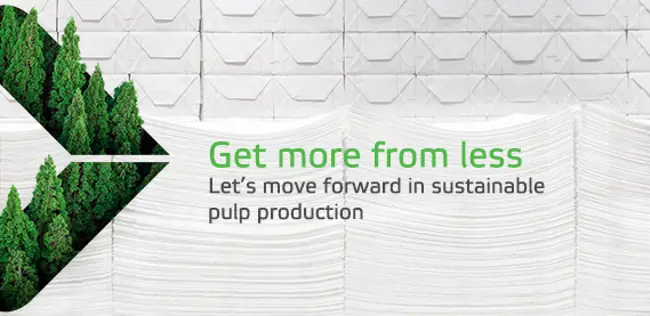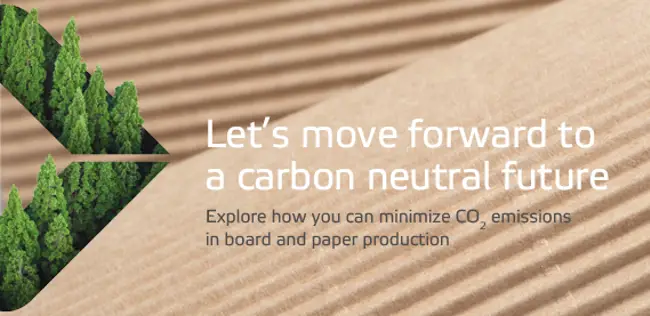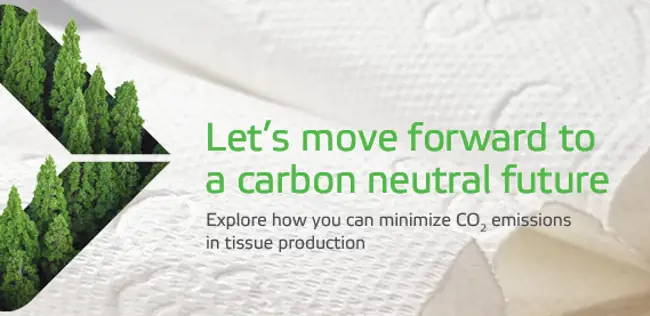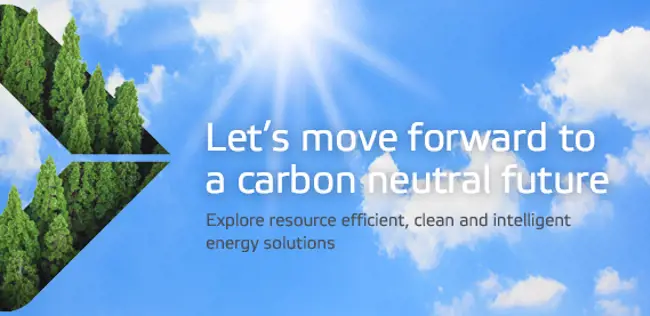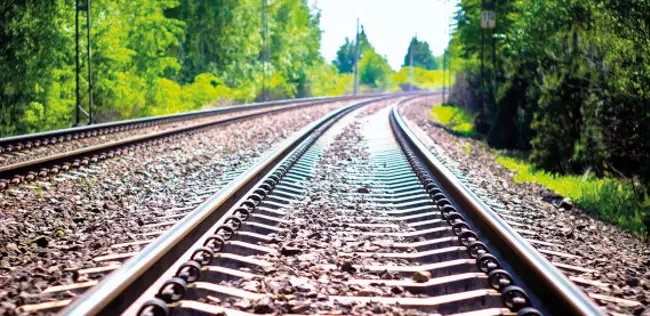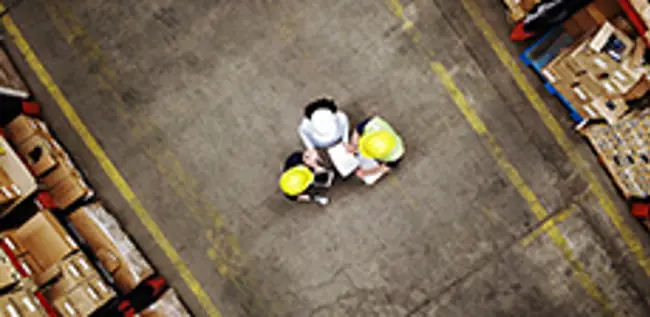Forward to a carbon neutral future with technology
Jun 3, 2022
At Valmet, we believe technology plays a key role in the transition to the carbon neutral economy. Our aim is to enable 100 percent carbon neutral production for our customers and to improve the energy efficiency of our current offering by 20 percent by 2030. Already today, we offer an extensive range of solutions for reducing raw material, energy, water and chemical consumption.

The target of achieving a carbon neutral economy is now higher on the agenda than ever for many companies. Laura Puustjärvi, Head of Sustainability at Valmet, opens up the reasons for the changes in the markets.
“The Paris Climate Agreement was a game changer. It has pushed signatory countries to mitigate climate change and pursue significant emission reductions and carbon neutrality. Thanks to the agreement, many governments have set national targets to phase out fossil fuels.”
The EU has set a binding target of achieving climate neutrality by 2050 as part of the European Green Deal. The goal requires current greenhouse gas emissions to fall in the coming years. Additionally, the EU has raised its 2030 climate ambition to cut emissions in the economy by an average of at least 55 percent. In Europe, the pulp and paper industry has raised its ambition, at up to 61 percent by 2030 compared to 2005.
The push for carbon neutral production is driven by the expectations of consumers, regulators, and the financial sector alike. While Europe is leading the way, other continents are embracing a similar trend.
The reduction of CO2 emissions goes hand in hand with the energy market transformation.
“The EU is united in addressing climate change and achieving carbon neutrality by 2050. China aims to achieve carbon neutrality by 2060. They have announced that CO2 emissions will peak before 2030, after which they will start to decline gradually,” says Puustjärvi.
“The financial sector is also accelerating the transformation through green finance instruments across all industries. The EU is dedicating 30 percent of its post-Covid recovery budget to green funding and technologies,” she says.
Valmet has set CO2 reduction targets and concrete actions for the entire value chain
In 2021, Valmet launched its ambitious climate program – Forward to a carbon neutral future – which sets targets for its value chain, including the supply chain, Valmet’s own operations and the use phase of technologies. Valmet aims for an 80 percent cut in CO2 emissions in its own operations and 20 percent in the supply chain by 2030. The baseline year for these targets is 2019.
In the use of its technologies, Valmet targets an achievement of a further cut of 20 percent in energy consumption compared to the current technology portfolio. The ultimate goal is to enable 100 percent carbon neutral pulp and paper processes by 2030. Valmet is already providing its customers today with energy solutions and pulp technologies that enable carbon neutral energy production using biomass.
“Our climate program is a continuation of our systematic approach to fostering sustainability in our value chain. For example, we’ve been improving energy efficiency – both our own and that of our customers – for a long time. Our approach creates cost savings and decreases emissions, which is a win-win situation for everyone,” Puustjärvi says.
The reduction of CO2 emissions goes hand in hand with the energy market transformation. Alongside continuous energy efficiency improvements through digitalization and service upgrades, key decarbonizing actions include the replacement of fossil fuels with renewables and the introduction of CO2-free electricity and district heat when available.
“We’re among the few players in the market to take a comprehensive value chain approach to CO2 emission reduction. Not only do we offer our customers solutions for carbon neutral production – we also support and cooperate closely with our suppliers in finding new ways to decrease emissions across the value chain,” she adds.
“The impact comes from the best available technologies, optimized mill design and the right automation, Industrial Internet and service solutions.”
Toward carbon neutral production processes by 2030
Janne Pynnönen, Vice President of R&D at Valmet, underlines that technology will play a crucial role in the transition to carbon neutrality. Valmet’s total carbon footprint was approximately 104 million tonnes of CO2 in 2021.
“We’ve estimated that around 95 percent of the environmental impact is caused by our customers’ use of our technologies over their entire lifecycles. The remaining 5 percent comes from the supply chain and our own operations.”
The pulp and paper industry aims to be a forerunner in the transition to a low-carbon economy. A key contribution is made by continuous R&D work, which is being done in all Valmet’s business lines. Valmet aims to enable all its customers to move gradually to carbon neutral production by 2030.
“The impact comes from investing in the best available technologies, optimizing mill design and selecting the right automation, and Industrial Internet and service solutions in tissue, pulp and board and paper production. By developing new technologies, we aim to enable entirely carbon neutral pulp and paper production, with the customer using carbon neutral electricity.”
For example, the Valmet Industrial Internet (VII) offering covers an extensive range of solutions and applications for advanced monitoring and prediction to increase production capacity, machine uptime and energy efficiency, and to reduce quality losses and overall operating costs.
Energy efficiency and replacement of fossil fuels are key to emission reduction
“When we’re developing new technologies and products, our new-generation innovations consume less raw materials, chemicals and water. Energy efficiency is a key priority in our climate program,” confirms Pynnönen.
“Drying is the most energy-intensive part of the papermaking process, accounting for roughly 80 percent of energy use. One of our focus areas is to replace gas burners with electric dryers,” notes Pynnönen.
“We’re researching opportunities to reduce the need for water and ways of harnessing low-temperature heat in the papermaking process.”
He adds that there are currently two significant focus areas in Valmet’s energy-saving strategy. “We’re researching opportunities to reduce the need for water in the papermaking process, which will also reduce the need to dry the product. Another focus area is to find ways of harnessing low-temperature heat, which is often not recovered in papermaking.”
Another key step is to fully eliminate the need for fossil fuels in papermaking by providing customers with Valmet’s current energy solutions, which enable carbon neutral energy production using biomass.
“In pulp production, we can already attain full carbon neutrality today by using bioenergy. Valmet is a leading global supplier of biomass-based heat and power generation solutions. We design our emission control solutions to ensure safe operation with low emissions,” he explains.
In pulp production, we can already attain full carbon neutrality today by using bioenergy.
“Our customers produce recyclable and carbon neutral products for the consumer market. I don’t foresee any major upheavals in this segment over the next ten years. Paper and board production will remain essentially the same, but we can continuously improve and increase efficiencies. On top of this, new products will make the industry even more diverse,” predicts Pynnönen.
"The increasing demand for process technology, automation, and services that enable carbon neutral industrial processes is obvious," Pynnönen adds. “Our customers and end users have the same goals, even though legislation and scenarios vary in different countries and continents. Ultimately, everyone is working toward the same goals.”
Related articles

